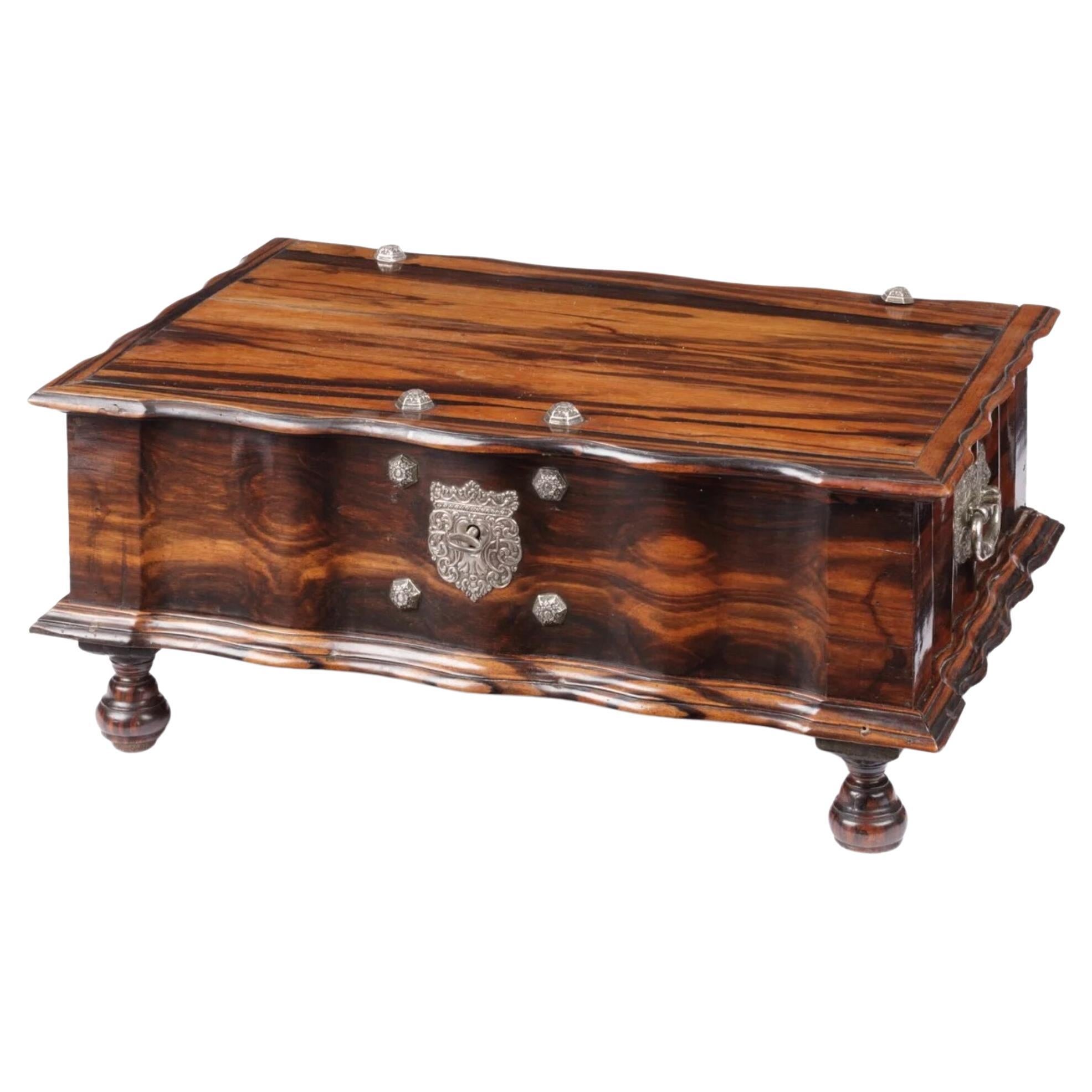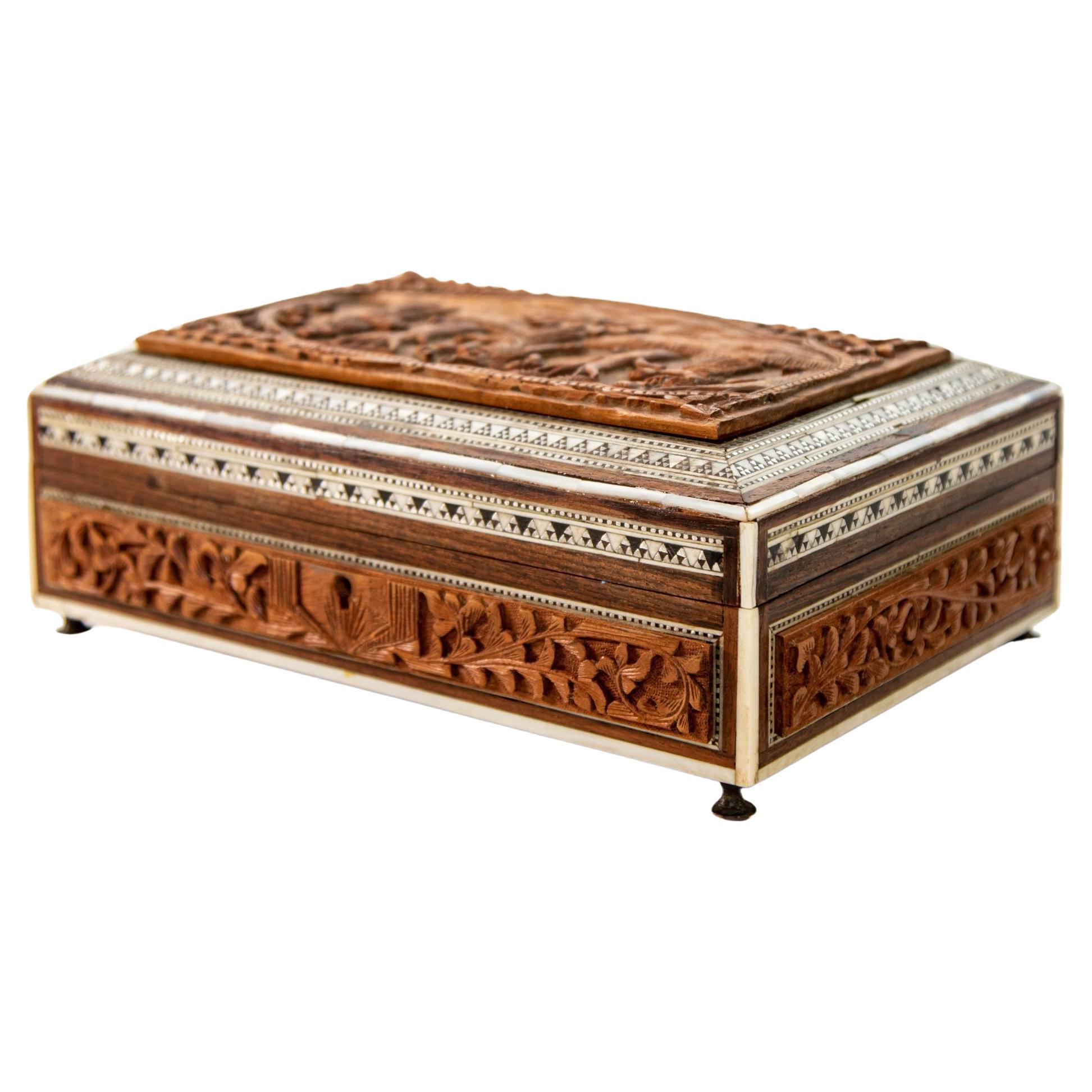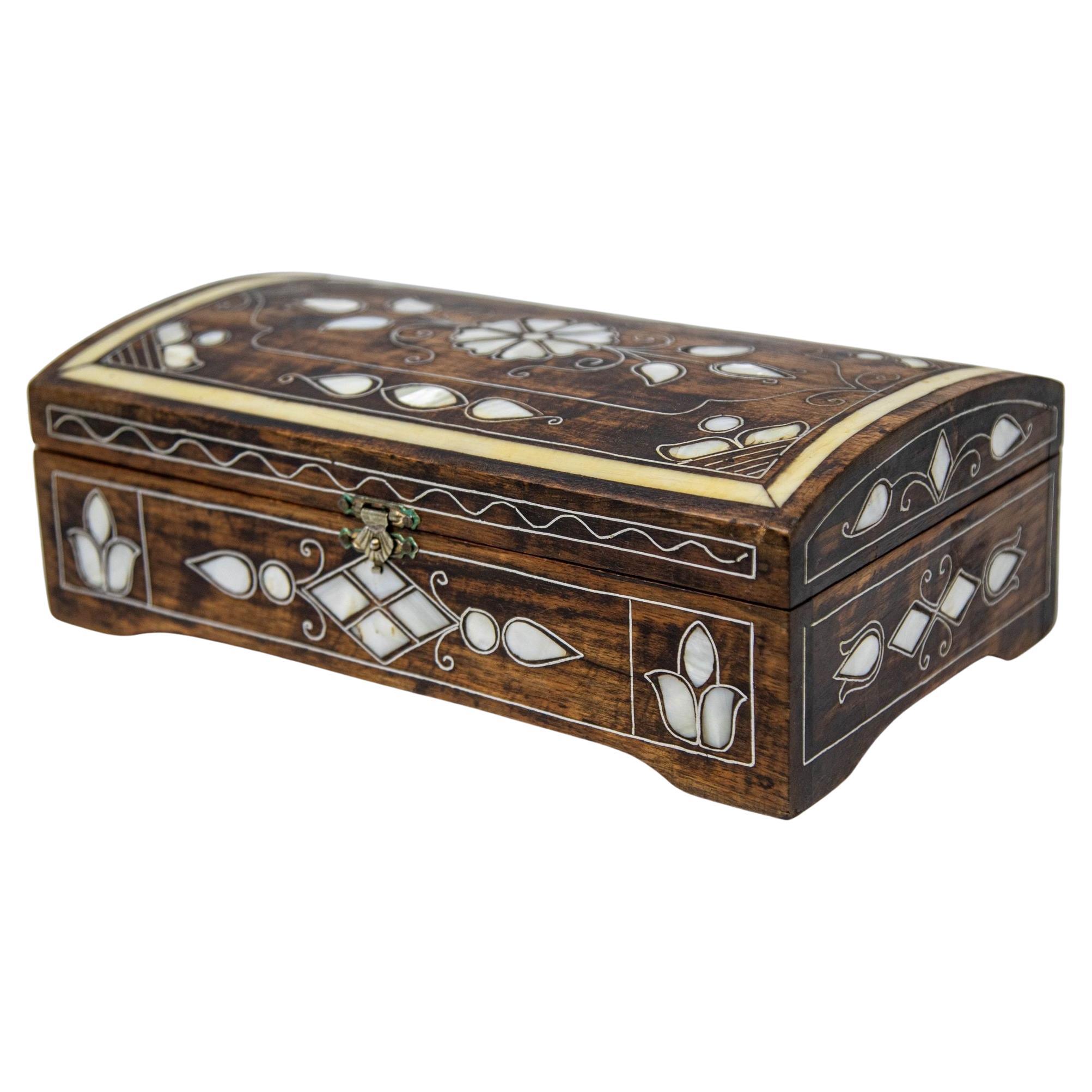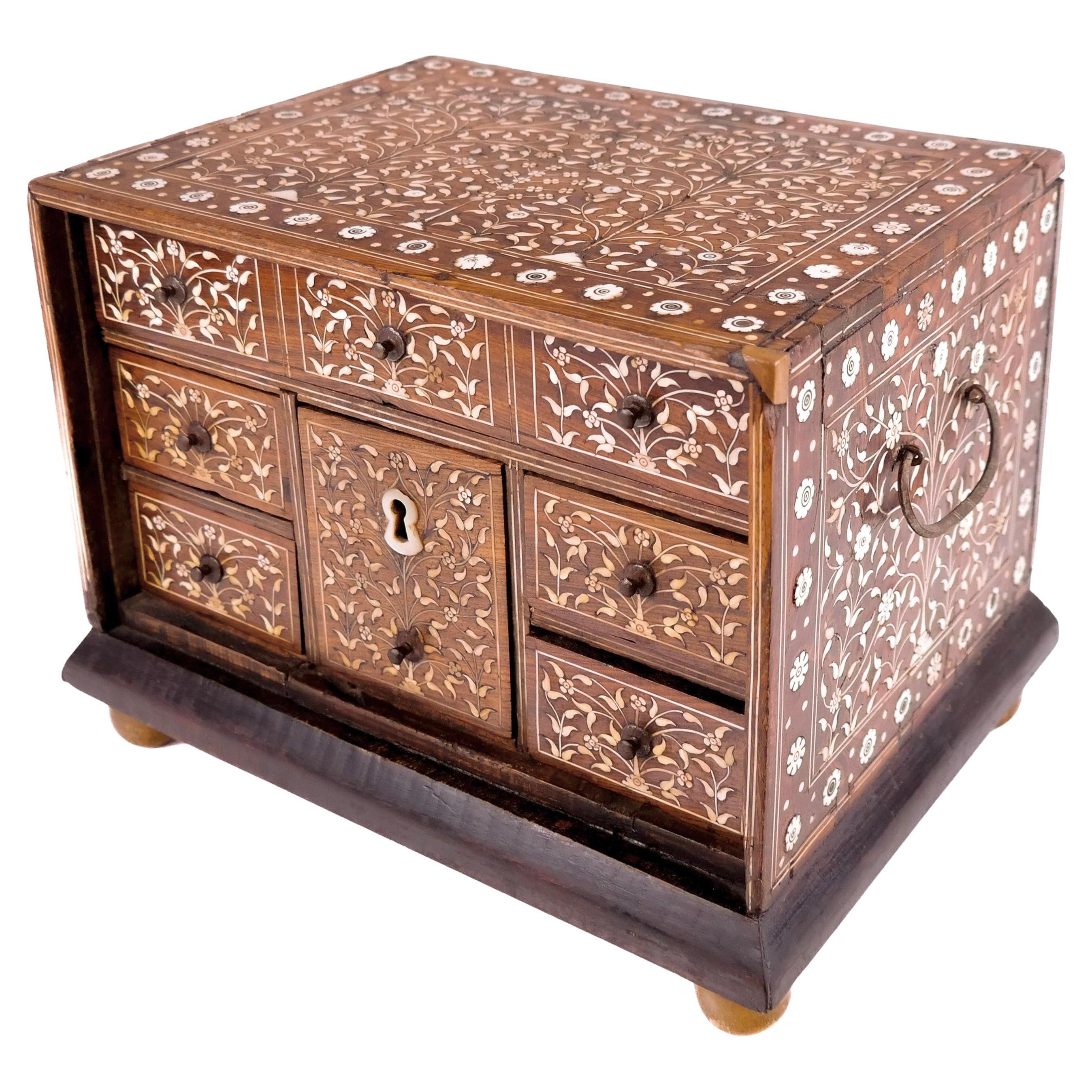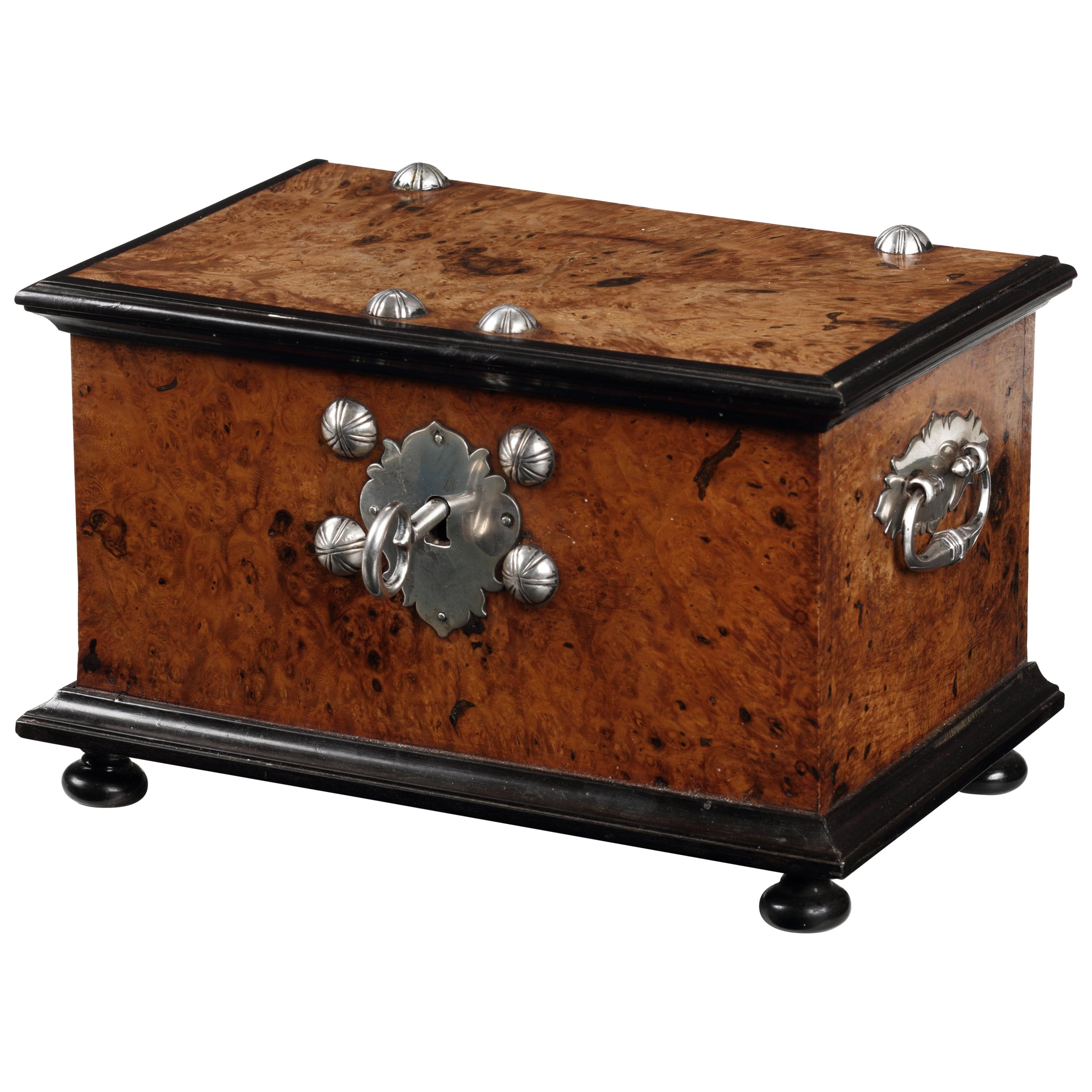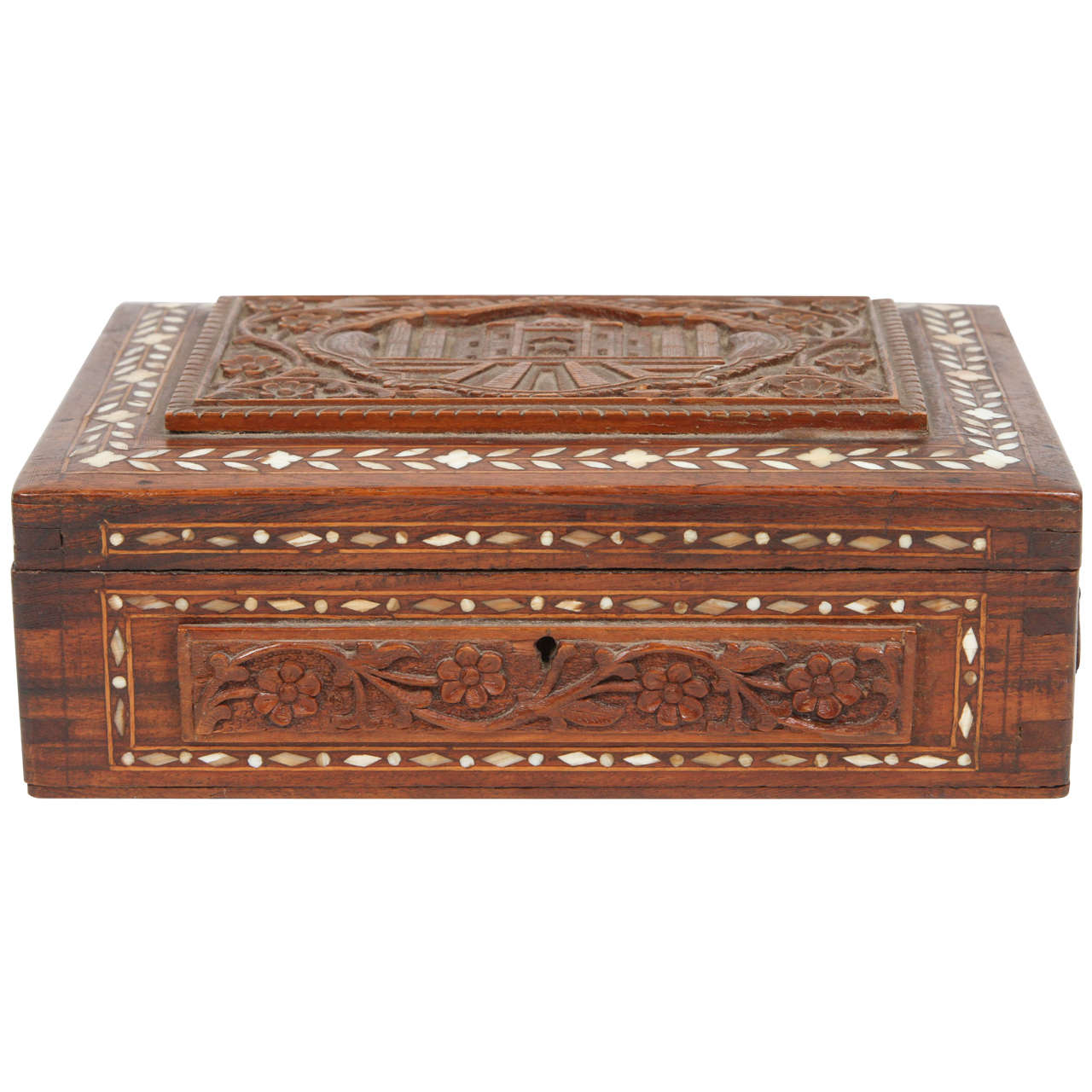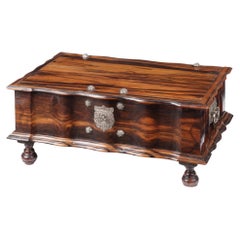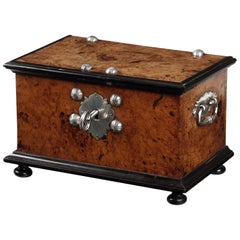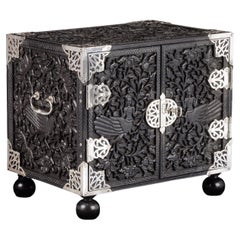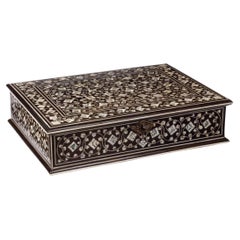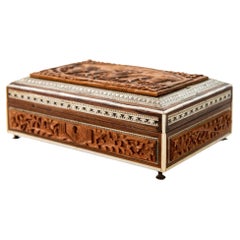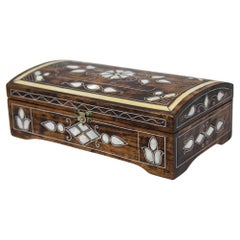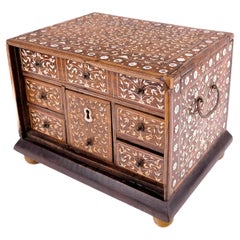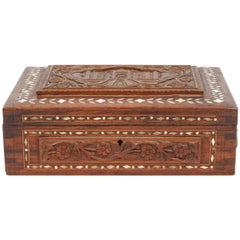Items Similar to A highly refined Dutch-colonial Sri Lankan inlaid box with silver mounts
Want more images or videos?
Request additional images or videos from the seller
1 of 3
A highly refined Dutch-colonial Sri Lankan inlaid box with silver mounts
$9,338.80
£6,947.97
€7,800
CA$13,010.86
A$14,160.74
CHF 7,434.26
MX$171,082.44
NOK 93,308.20
SEK 87,978.60
DKK 59,390.83
About the Item
Galle district, 18th century
The box is made of amboyna burr with inlays of ebony, bone and burr wood and has several interior compartments, all made with the utmost attention to detail.
H. 12 x W. 30.6 x D. 17.8 cm
Inside it has a lockable compartment, similar to compartments found in large sea chests and iln document boxes, and below the compartment a small drawer. It bears a label at the underside reading: M. Teunissen, 62 Lange Voorhout, The Hague, Curiosities & work of art, Furniture of all styles. Antique plates. Probably this miniature chest was to store valuable items, such as small curiosities, gems or jewellery.
- Dimensions:Height: 4.73 in (12 cm)Width: 12.05 in (30.6 cm)Depth: 7.01 in (17.8 cm)
- Materials and Techniques:
- Place of Origin:
- Period:
- Date of Manufacture:18th century
- Condition:Wear consistent with age and use.
- Seller Location:Amsterdam, NL
- Reference Number:1stDibs: LU5458243175792
About the Seller
5.0
Recognized Seller
These prestigious sellers are industry leaders and represent the highest echelon for item quality and design.
Established in 1985
1stDibs seller since 2020
23 sales on 1stDibs
Typical response time: 10 hours
- ShippingRetrieving quote...Shipping from: Maastricht, Netherlands
- Return Policy
Authenticity Guarantee
In the unlikely event there’s an issue with an item’s authenticity, contact us within 1 year for a full refund. DetailsMoney-Back Guarantee
If your item is not as described, is damaged in transit, or does not arrive, contact us within 7 days for a full refund. Details24-Hour Cancellation
You have a 24-hour grace period in which to reconsider your purchase, with no questions asked.Vetted Professional Sellers
Our world-class sellers must adhere to strict standards for service and quality, maintaining the integrity of our listings.Price-Match Guarantee
If you find that a seller listed the same item for a lower price elsewhere, we’ll match it.Trusted Global Delivery
Our best-in-class carrier network provides specialized shipping options worldwide, including custom delivery.More From This Seller
View AllDutch-Colonial Sri Lankan Coromandel Wood Document Box with Silver Mounts
Located in Amsterdam, NL
A Dutch-colonial Sri Lankan coromandel wood document box with silver mounts
Probably Galle, 18th century
H. 19 x W. 49 x D. 33 cm
The ches...
Category
Antique 18th Century Sri Lankan Dutch Colonial Furniture
Materials
Silver
Fine Dutch Colonial Indonesian Casket with Silver Mounts, circa 1706
Located in Amsterdam, NL
A fine Indonesian Ambonya burl, ebony and teak casket with silver mounts
Jakarta (Batavia), circa 1706 (year letter W (1705-1710), marked DV, probably Dirck Vooght
The outer ri...
Category
Antique Early 18th Century Indonesian Dutch Colonial Decorative Boxes
Materials
Sterling Silver
17th century colonial Sinhalese ebony two-door cabinet with silver mounts
Located in Amsterdam, NL
A splendid Dutch-colonial Sinhalese ebony two-door cabinet with silver mounts
Sri Lanka, Kandy, 2nd half 17th century, the mounts later
The cabinet with a central drawer with hidde...
Category
Antique 17th Century Sri Lankan Dutch Colonial Jewelry Boxes
Materials
Silver
18th century Dutch-Colonial ‘Vizagapatam’ pen-engraved bone inlaid ebony box
Located in Amsterdam, NL
A large Indian Colonial ‘Vizagapatam’ pen-engraved bone inlaid ebony box
Masulipatnam or Vizagapatam, 2nd half 18th century
H. 10.8 x W. 47 x D. 34 cm
...
Category
Antique Late 18th Century Indian Dutch Colonial More Asian Art, Objects ...
Materials
Bone, Ebony
A Dutch colonial ebony box with silver mounts
Located in Amsterdam, NL
Batavia (Jakarta), or Sri Lanka, circa 1680-1720
The document or money box is densely carved with fine scrolling vines and lotus flowers. It has a charming heart- shapes silver lock...
Category
Antique Late 17th Century Indonesian Dutch Colonial Antiquities
Materials
Silver
A Dutch colonial ebony box with silver mounts
Located in Amsterdam, NL
Batavia (Jakarta), or Sri Lanka, circa 1680-1720
The document or money box is densely carved with fine scrolling vines and lotus flowers. It has a charming heart- shapes silver lock...
Category
Antique 17th Century Indonesian Antiquities
Materials
Silver
You May Also Like
Antique Anglo-Indian Vizagapatam Jewelry Inlaid Sadeli Footed Box
Located in Moreno Valley, CA
Antique 19th century Anglo-Indian jewelry, trinket footed box, inlay with ebony, mosaic marquetry Sadeli work and a carved Hindu scene on top.
The box case is made from sandalwood wi...
Category
Early 20th Century Indian Anglo-Indian Decorative Boxes
Materials
Bone, Mother-of-Pearl, Wood
Anglo-Indian Mother of Pearl Inlaid Jewelry Box
Located in Moreno Valley, CA
Anglo-Indian Mother of Pearl Inlaid jewelry Box.
1940s Victorian Anglo Indian box in silver, bone and mother of pearl Inlaid.
An elegant Anglo Indian bon...
Category
Mid-20th Century Indian Anglo-Indian Decorative Boxes
Materials
Wood
Inlaid Table Cabinet
Located in Bradenton, FL
Inlaid table cabinet with six compartments and two handles. This is a beautifully decorated crafted box reflecting the craftsmanship and cultural influences of Goa during the colonia...
Category
Antique 19th Century Indian Anglo-Indian Decorative Boxes
Materials
Mother-of-Pearl, Wood
$1,885
19th Century Anglo-Indian Mughal Box
Located in Moreno Valley, CA
19th century Anglo-Indian Mughal wood box, inlaid and hand carved with the Taj Mahal and some flowers all around.
Jewelry box, Anglo-Raj box from India in great condition.
Nice Mughal Bombay Box...
Category
Antique Late 19th Century Indian Anglo Raj Decorative Boxes
Materials
Sandalwood
Indian "Bombay" Box w/Sadeli Work Framing Carved Panels and Raised on Metal Feet
Located in Chapel Hill, NC
Indian "Bombay" dresser/jewelry box with a mirror in the lid and raised on a "tray" base with silvered feet. The exterior with exotic wood and sadeli work (micro-mosaic inlay) framin...
Category
Antique Late 19th Century Indian Decorative Boxes
Materials
Bone, Shell, Wood
Antique Keepsake Box, English, Coromandel, Inlaid Stationery Case, Regency, 1830
Located in Hele, Devon, GB
This is an antique keepsake box. An English, Coromandel inlaid stationery case, dating to the Regency period, circa 1830.
Appealing sarcophagus ...
Category
Antique Early 19th Century British Regency Decorative Boxes
Materials
Wood
More Ways To Browse
Sri Lankan Antique Furniture
Colonial Ebony
Colonial Sri Lankan
Antique Miniature Chests
Antique Miniature Plates
Inlaid Silver Box
Inlaid Bone Decorative Boxes
Antique Sea Chest
Document Chest
Galle Box
Used Precision Tools
Victorian Shell Boxes
Vintage Apple Box
Vintage Puzzles
19th Century Document Box
Antique Coffee Tin
Antique Fire Engine
Antique Thread Spool
